- You are here:
- Home »
- Indoor Plants
- » Golden Pothos Care Guide
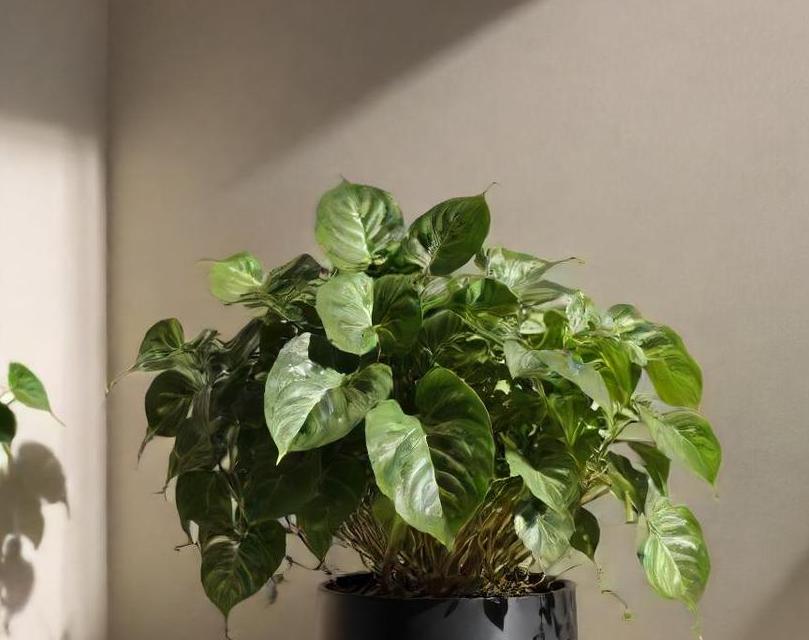
Golden Pothos Care Guide
Indoor plants have become an integral part of interior décor, not only for their aesthetic appeal but also for their numerous health and wellness benefits. Among the vast array of indoor plants, the Golden Pothos stands out as a popular choice for its easy maintenance, adaptability to various environments, and striking foliage. This article delves into the world of the Golden Pothos, exploring its botanical characteristics, historical and cultural significance, common names, and varieties.
Contents
- 1 What Is Golden Pothos?
- 2 Botanical Characteristics
- 3 Historical And Cultural Significance
- 4 Common Names And Varieties
- 5 Light Requirements
- 6 Soil Requirements
- 7 Temperature Requirements
- 8 Humidity Requirements
- 9 Watering Needs For Golden Pothos
- 10 Fertilization
- 11 How To Plant Golden Pothos
- 12 Potting
- 13 Pruning Techniques For Golden Pothos
- 14 Propagation Methods For Golden Pothos
- 15 Troubleshooting Problems With Planting Golden Pothos Indoors
- 16 Conclusion
- 17 FAQS
What Is Golden Pothos?
Golden Pothos, scientifically known as Epipremnum aureum, is a species of flowering plant in the family Araceae. It is native to Southeast Asia, specifically the Solomon Islands, where it thrives in the tropical rainforests. Revered for its lush green foliage streaked with golden-yellow variegation, the Golden Pothos is prized as both an indoor and outdoor ornamental plant.
Botanical Characteristics
The Golden Pothos is a perennial vine characterized by its heart-shaped leaves that grow alternately along its stems. The leaves are glossy and leathery, with a distinct yellow or golden hue splashed across the surface, creating a captivating visual contrast against the deep green backdrop. These variegated leaves can grow to impressive lengths, making the Golden Pothos an ideal choice for hanging baskets or cascading from elevated surfaces.
In its natural habitat, the Golden Pothos exhibits climbing tendencies, using aerial roots to attach itself to trees or other structures for support. However, when cultivated indoors, it is commonly grown as a trailing plant or trained to climb on a trellis or moss pole.
The plant’s root system is robust yet adaptable, allowing it to thrive in a variety of soil conditions. Golden Pothos is known for its resilience and ability to tolerate low light levels, making it suitable for environments with limited sunlight, such as offices or interior spaces with few windows.
Historical And Cultural Significance

Golden Pothos has a rich history intertwined with various cultures, where it has been revered for its beauty and symbolism. In Southeast Asia, particularly in countries like Indonesia and Malaysia, the plant is associated with prosperity, good fortune, and positive energy. It is often grown near entrances or in the vicinity of homes and businesses to attract blessings and ward off negative influences.
In traditional Chinese culture, the Golden Pothos is believed to bring luck and abundance, especially when placed in the wealth corner of a home or office according to Feng Shui principles. Its vibrant foliage symbolizes growth, vitality, and vitality, making it a popular choice for gifting during auspicious occasions such as weddings, housewarmings, or business openings.
Common Names And Varieties
The Golden Pothos is known by various common names across different regions and languages. In English-speaking countries, it is commonly referred to as Golden Pothos, Devil’s Ivy, or simply Pothos. The name "Devil’s Ivy" is derived from its resilient nature and ability to thrive in low-light conditions, even in the darkest corners of a room.
In other parts of the world, the plant is known by names such as Money Plant, Silver Vine, Ceylon Creeper, and Hunter’s Robe. These names reflect the diverse cultural interpretations and uses of the plant throughout history.
While the classic Golden Pothos variety with its golden-yellow variegation is the most widely recognized, several cultivars and hybrids have been developed to cater to different preferences and tastes. Some popular varieties include:
- ‘Marble Queen’: This cultivar features creamy-white variegation on its leaves, creating a marbled effect that adds an elegant touch to any indoor space.
- ‘Neon’: Known for its vibrant lime-green foliage, the ‘Neon’ variety adds a pop of color to indoor gardens and is prized for its bright and eye-catching appearance.
- ‘Jade’: With its solid green leaves, the ‘Jade’ variety offers a more subtle and understated aesthetic compared to its variegated counterparts, making it a versatile choice for minimalist décor schemes.
The Golden Pothos is a versatile and beloved indoor plant cherished for its beauty, resilience, and cultural significance. Whether adorning a windowsill, hanging from a macramé planter, or cascading down a bookshelf, this iconic plant adds a touch of greenery and elegance to any indoor environment. From its lush foliage to its historical symbolism, the Golden Pothos continues to captivate plant enthusiasts and decorators alike, embodying the timeless allure of nature brought indoors.
Light Requirements
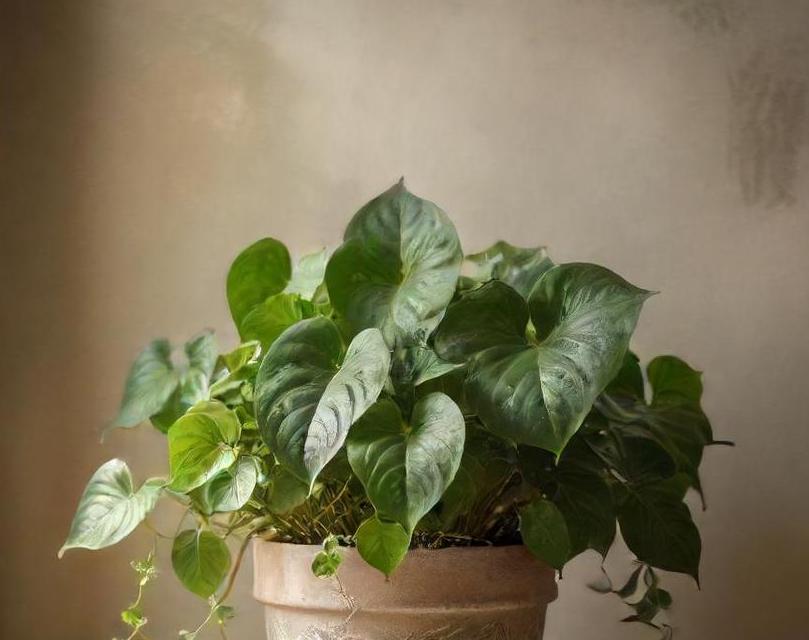
The Golden Pothos is a member of the Araceae family and is prized for its attractive heart-shaped leaves, which are typically variegated with shades of green, yellow, and sometimes white. This plant is widely appreciated for its air-purifying properties, making it an excellent choice for both homes and offices. It’s often used in hanging baskets or placed on shelves where its trailing vines can cascade elegantly.
Beyond its aesthetic appeal, the Golden Pothos is celebrated for its resilience and adaptability. Even novice gardeners find success with this plant, as it can tolerate a range of conditions and requires minimal maintenance. Its hardiness makes it an ideal choice for those seeking to introduce greenery into their indoor spaces without the hassle of high-maintenance care routines.
One of the reasons for the Golden Pothos’s popularity is its ability to thrive in various lighting conditions, from low to bright indirect light. However, to ensure optimal growth and leaf variegation, it’s best to provide moderate to bright indirect light.
Inadequate light can lead to stunted growth and loss of variegation in the leaves, while direct sunlight can scorch the foliage. Therefore, it’s advisable to place the plant near a window where it can receive filtered sunlight or artificial light sources such as fluorescent or LED lights.
If your living space lacks natural light, supplemental lighting can be used to provide the necessary illumination for healthy growth. Adjustable grow lights with a spectrum similar to natural sunlight are particularly beneficial for indoor plants like the Golden Pothos.
Regularly rotating the plant ensures even exposure to light on all sides, preventing it from leaning towards the light source and promoting balanced growth.
Soil Requirements
The Golden Pothos isn’t particularly picky when it comes to soil, but a well-draining potting mix is essential to prevent waterlogging, which can lead to root rot. A combination of peat moss, perlite, and coarse sand or bark works well to provide adequate aeration and drainage.
When repotting or planting Golden Pothos, choose a container with drainage holes at the bottom to allow excess water to escape freely. This helps prevent water from pooling at the roots, which can cause them to suffocate and decay.
While the Golden Pothos can tolerate slightly acidic to slightly alkaline soil pH levels (6.1 to 7.3), it’s essential to avoid extremes. Regularly checking the soil moisture levels and watering only when the top inch of the soil feels dry to the touch helps prevent overwatering, a common issue that can lead to root rot and other problems.
Temperature Requirements
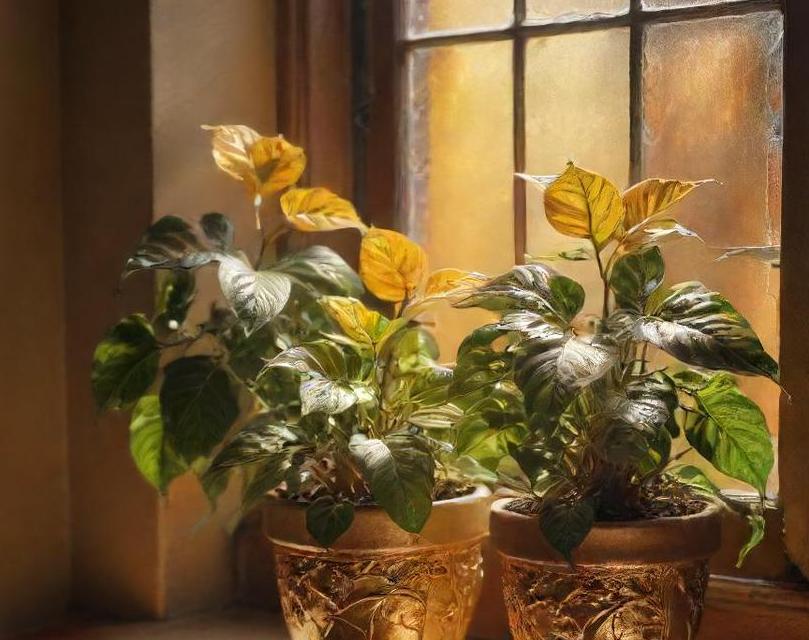
Golden Pothos is adaptable to a wide range of temperatures, making it suitable for indoor environments with varying climate conditions. However, it thrives best in temperatures between 60°F to 85°F (15°C to 29°C).
Avoid exposing the plant to sudden temperature fluctuations or drafts, as this can stress the plant and affect its growth. Keep it away from air conditioning vents, radiators, or drafty windows to maintain stable temperature levels.
During the winter months, when indoor heating can lead to drier air, providing adequate humidity levels around the plant can help prevent leaf browning and maintain overall health. Grouping plants together, using a humidifier, or placing the pot on a tray filled with pebbles and water can increase ambient humidity.
Humidity Requirements
While the Golden Pothos can tolerate average indoor humidity levels, it benefits from higher humidity, especially during the dry winter months or in environments with air conditioning. Adequate humidity helps prevent leaf browning, promotes lush growth, and enhances overall plant health.
Maintaining humidity levels between 40% to 60% is ideal for Golden Pothos. In addition to using a humidifier, there are several methods to increase humidity around the plant:
- Misting: Regularly misting the foliage with water helps increase humidity levels and keeps the leaves clean, preventing dust buildup.
- Grouping Plants: Cluster indoor plants together to create a microclimate with higher humidity levels.
- Tray of Water: Placing the plant pot on a tray filled with pebbles and water provides moisture as the water evaporates, increasing humidity around the plant.
- Room Humidifiers: Using a room humidifier can help maintain consistent humidity levels, benefiting not only the Golden Pothos but also other indoor plants and occupants of the space.
Monitoring humidity levels with a hygrometer can help you adjust humidity-enhancing methods accordingly to meet the plant’s needs.
The Golden Pothos is a beloved indoor plant cherished for its lush foliage, air-purifying properties, and ease of care. With its striking variegated leaves and resilience to various growing conditions, it's an excellent choice for both novice and experienced gardeners alike. To ensure the health and vitality of your Golden Pothos, provide it with moderate to bright indirect light, a well-draining potting mix, and stable temperatures between 60°F to 85°F (15°C to 29°C). While it can tolerate average indoor humidity levels, maintaining humidity between 40% to 60% can promote optimal growth and prevent leaf browning. By following these care guidelines and paying attention to the plant's needs, you can enjoy the beauty of Golden Pothos in your indoor space for years to come. Whether adorning a shelf, hanging basket, or trellis, this versatile plant adds a touch of greenery and elegance to any interior environment.
Watering Needs For Golden Pothos
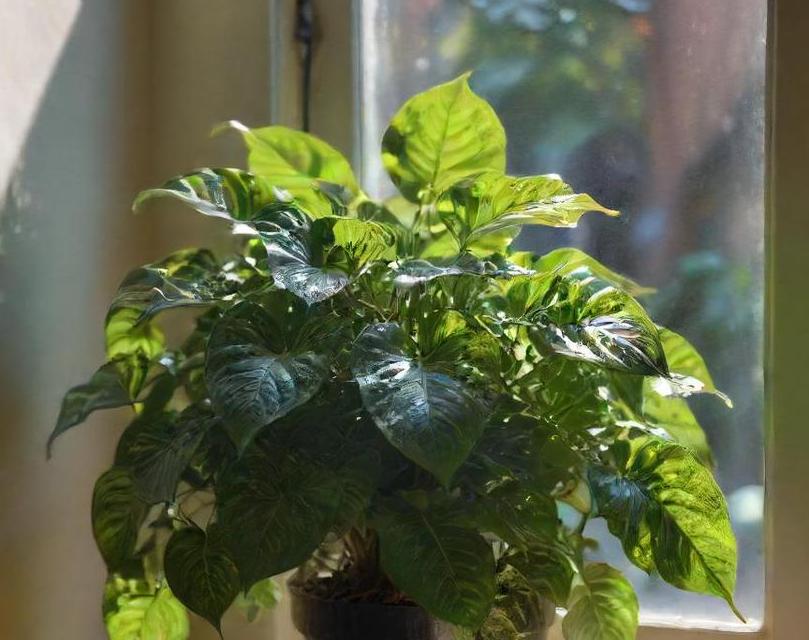
Golden Pothos, scientifically known as Epipremnum aureum, is a popular and easy-to-care-for indoor plant prized for its lush green foliage with splashes of golden-yellow variegation. Belonging to the Araceae family, this tropical vine is native to the Solomon Islands in the South Pacific. Renowned for its air-purifying qualities and adaptability to various indoor conditions, Golden Pothos is a favorite among both novice and experienced plant enthusiasts.
Golden Pothos is characterized by its heart-shaped leaves that grow alternately along its stems. These leaves can vary in size from small to large, depending on the plant’s age and environment. The vibrant golden-yellow variegation contrasts beautifully with the deep green color of the leaves, adding visual interest to any indoor space.
This resilient plant is known by several common names, including Devil’s Ivy, Money Plant, and Hunter’s Robe. Its ability to thrive in low light conditions and tolerate neglect makes it an excellent choice for beginners or anyone looking to add a touch of greenery to their home or office environment.
Watering is a crucial aspect of Golden Pothos care, as improper watering can lead to root rot or other issues. While this plant is relatively forgiving of occasional neglect, it’s essential to establish a consistent watering routine to keep it thriving.
Golden Pothos prefers evenly moist soil but is susceptible to overwatering. Before watering, it’s essential to check the moisture level of the soil to avoid drowning the roots. A simple way to test the soil moisture is by inserting your finger into the soil up to the first knuckle. If the soil feels dry at this depth, it’s time to water the plant.
During the growing season, which typically spans from spring through summer, aim to water your Golden Pothos when the top inch of soil feels dry to the touch. Water the plant thoroughly until the excess water drains out from the bottom of the pot. Ensure that the pot has drainage holes to prevent water from accumulating at the bottom, which can lead to root rot.
In winter, when the plant’s growth slows down, reduce the frequency of watering. Allow the top two inches of soil to dry out between watering sessions, as Golden Pothos requires less water during its dormant period. Adjust your watering schedule based on environmental factors such as humidity levels and indoor temperature.
It’s essential to avoid letting the soil become waterlogged, as this can lead to root rot and other fungal diseases. Always discard any excess water that collects in the saucer or tray beneath the pot to prevent the roots from sitting in standing water.
Fertilization
Fertilizing Golden Pothos is essential for promoting healthy growth and vibrant foliage. While this plant can survive in nutrient-poor soil, regular fertilization encourages lush foliage and robust development.
During the growing season, which coincides with spring and summer, feed your Golden Pothos with a balanced liquid fertilizer every four to six weeks. Choose a fertilizer specifically formulated for houseplants and dilute it to half the recommended strength to avoid over-fertilizing, which can cause fertilizer burn.
Alternatively, you can use slow-release fertilizer pellets or granules incorporated into the soil during potting. These slow-release fertilizers provide a steady supply of nutrients to the plant over an extended period, reducing the need for frequent fertilization.
Avoid fertilizing Golden Pothos during the winter months when the plant’s growth slows down. Resume fertilization in spring as the plant enters its active growing phase.
While fertilizing is beneficial, it’s crucial not to overdo it, as excessive fertilizer can build up in the soil and cause salt accumulation, leading to root damage. Always follow the manufacturer’s instructions when applying fertilizer and flush the soil occasionally with water to remove any excess salts.
How To Plant Golden Pothos
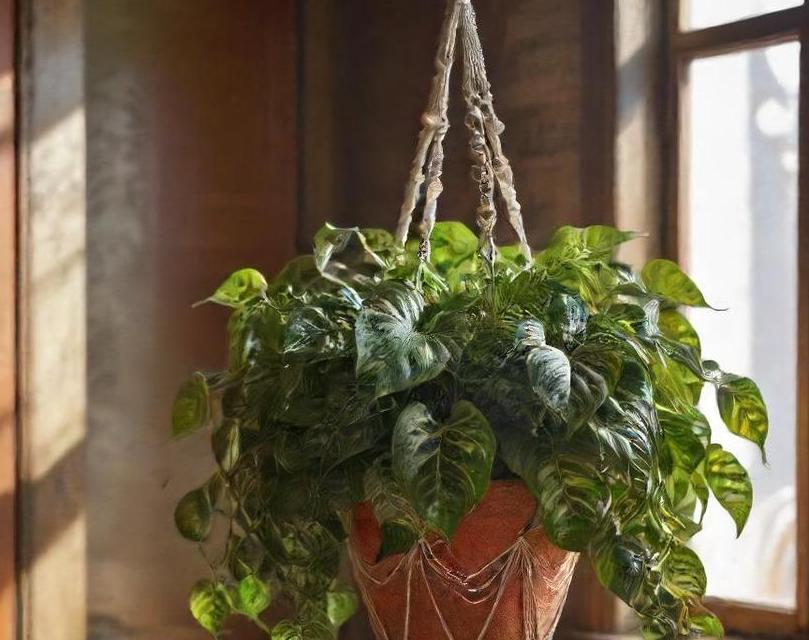
Planting Golden Pothos is a straightforward process that requires minimal effort and expertise. Whether you’re starting with a young plant or propagating from cuttings, following these steps will help ensure successful establishment and growth.
Propagation
Propagation is one of the most common methods of growing Golden Pothos, allowing you to create new plants from existing ones. There are several propagation techniques you can use:
-
Stem Cuttings: Take stem cuttings from a mature Golden Pothos plant, ensuring each cutting has at least two nodes. Nodes are the points on the stem where leaves emerge. Trim the cutting just below a node using clean, sharp scissors or pruning shears.
-
Water Propagation: Place the stem cuttings in a jar or vase filled with water, ensuring that the nodes are submerged. Position the container in a bright, indirect light location and change the water regularly to prevent stagnation and algae growth.
-
Soil Propagation: Alternatively, you can plant the stem cuttings directly into moist potting soil. Insert the cuttings into the soil, ensuring that at least one node is buried beneath the surface. Keep the soil consistently moist until roots develop.
Potting
Once the roots have developed, transplant the rooted cuttings into individual pots filled with well-draining potting mix. Choose a container with drainage holes to prevent waterlogging, and ensure that the pot is slightly larger than the root ball to allow room for growth.
Here’s how to pot Golden Pothos:
-
Prepare the Pot: Fill the bottom of the pot with a layer of small stones or gravel to improve drainage. Then, add a layer of potting mix, leaving enough space to accommodate the root ball.
-
Remove the Plant: Gently remove the Golden Pothos plant from its current container, taking care not to damage the roots. If the roots are tightly bound, gently loosen them with your fingers to encourage outward growth.
-
Position the Plant: Place the plant in the center of the pot, ensuring that the top of the root ball sits just below the rim of the container. Add more potting mix around the sides, pressing it down gently to secure the plant in place.
-
Water Thoroughly: After potting, water the plant thoroughly to settle the soil and hydrate the roots. Allow any excess water to drain out from the bottom of the pot, and empty the saucer or tray to prevent waterlogging.
-
Placement: Finally, choose a suitable location for your Golden Pothos where it can receive bright, indirect light. Avoid placing it in direct sunlight, as this can scorch the leaves. Ideal locations include near a north or east-facing window or in a well-lit room away from direct sunlight.
Golden Pothos is a versatile and low-maintenance indoor plant that adds beauty and greenery to any space. With its lush foliage and golden-yellow variegation, this tropical vine is not only aesthetically pleasing but also offers air-purifying benefits, making it a popular choice for homes, offices, and other indoor environments. By understanding and implementing proper care techniques such as watering, fertilization, and planting methods, you can ensure that your Golden Pothos thrives and flourishes year-round.
Pruning Techniques For Golden Pothos
Golden Pothos (Epipremnum aureum), often referred to as Devil’s Ivy, is a beloved houseplant cherished for its robust nature and stunning foliage. Native to the Solomon Islands, this evergreen vine boasts heart-shaped leaves that are variegated with yellow, white, or pale green streaks. Its hardiness and adaptability make it an ideal choice for both novice and seasoned plant enthusiasts.
Golden Pothos thrives in a variety of indoor conditions, tolerating low light and irregular watering, which contributes to its reputation as a virtually indestructible plant. This plant is also known for its air-purifying properties, effectively removing common household toxins from the air. Its ability to grow vigorously in various environments and its cascading vines add a touch of greenery and elegance to any space.
Pruning Golden Pothos is essential for maintaining its health, controlling its size, and encouraging bushier growth. Proper pruning techniques can transform a leggy, sparse plant into a lush, full specimen.
Why Prune Golden Pothos?
- Control Size and Shape: Pruning helps manage the plant’s size, preventing it from becoming too long and unwieldy.
- Promote Bushier Growth: Cutting back stems encourages the plant to produce new shoots, leading to a fuller appearance.
- Remove Dead or Yellowing Leaves: Eliminating unhealthy foliage helps prevent the spread of disease and maintains the plant’s aesthetic appeal.
- Prevent Legginess: Regular pruning prevents the plant from becoming leggy, with long stems and few leaves.
When To Prune
Pruning can be done at any time of the year, but it is often best performed during the plant’s active growing season, typically in spring and summer. This allows the plant to recover quickly and promotes more vigorous growth.
How To Prune
- Tools Needed: Use sharp, clean scissors or pruning shears to avoid damaging the plant. Sterilize your tools before use to prevent the spread of disease.
- Identify Where to Cut: Examine the plant and identify the nodes (the points on the stem where leaves grow). Make cuts just above these nodes to encourage new growth.
- Make the Cut: Cut at a 45-degree angle to prevent water from collecting on the cut surface, which can lead to rot.
- Remove Yellowing or Damaged Leaves: Cut away any leaves that are yellow, brown, or damaged to redirect the plant’s energy to healthy growth.
- Shape the Plant: To maintain a desired shape, selectively prune back stems. If the plant is too long, cut back to the desired length, making sure to leave at least one or two nodes on each stem.
Post-Pruning Care
After pruning, care for your Golden Pothos by providing appropriate water and light. Pruned plants may need a bit more attention initially to ensure they bounce back robustly. Avoid overwatering, which can lead to root rot, and ensure the plant is placed in indirect light.
Propagation Methods For Golden Pothos
Golden Pothos is one of the easiest houseplants to propagate, making it a popular choice for plant owners who wish to expand their collection or share with friends. There are several methods to propagate this plant, including stem cuttings in water, soil propagation, and air layering.
Stem Cuttings In Water
- Select a Healthy Stem: Choose a healthy vine with several leaves and nodes. Cut a section of the stem just below a node, ensuring the cutting is at least 4-6 inches long.
- Prepare the Cutting: Remove the leaves from the bottom node to expose it. This is where new roots will form.
- Place in Water: Submerge the cut end of the stem in a glass of water, ensuring that at least one node is underwater. Place the glass in a spot with bright, indirect light.
- Change Water Regularly: To prevent stagnation and promote healthy root development, change the water every few days.
- Wait for Roots to Develop: Roots should start to form within a few weeks. Once the roots are a few inches long, the cutting can be transplanted into soil.
Soil Propagation
- Select and Prepare the Cutting: As with water propagation, choose a healthy stem and cut a section below a node. Remove the leaves from the lower node.
- Prepare the Pot and Soil: Use a small pot with drainage holes and fill it with a well-draining potting mix. Moisten the soil slightly.
- Plant the Cutting: Insert the cutting into the soil, ensuring the node is buried. Firm the soil around the cutting to secure it in place.
- Water and Care: Water the soil lightly and place the pot in a location with bright, indirect light. Keep the soil moist but not waterlogged.
- Monitor Growth: New roots should develop within a few weeks, followed by new leaf growth.
Air Layering
Air layering is a slightly more advanced method, but it can be very effective for propagating Golden Pothos.
- Choose a Healthy Stem: Select a section of the stem that is healthy and robust.
- Create a Wound: Make a small, shallow cut or strip a section of the stem about 1-2 inches long.
- Apply Rooting Hormone: Apply rooting hormone to the wound to encourage root development.
- Wrap with Moss: Wrap the wounded section with moist sphagnum moss, and then cover it with plastic wrap to retain moisture. Secure with twist ties or string.
- Maintain Moisture: Check the moss regularly to ensure it remains moist. Roots should start to develop within a few weeks.
- Cut and Plant: Once roots are visible, cut below the new root ball and plant the new section in soil.
Troubleshooting Problems With Planting Golden Pothos Indoors
Despite their hardy nature, Golden Pothos can encounter various issues. Identifying and addressing these problems promptly can help maintain a healthy plant.
Common Issues And Solutions
Yellowing Leaves
Cause: Overwatering is the most common cause of yellow leaves. Poor drainage, root rot, and inadequate lighting can also contribute.
Solution: Check the soil moisture level. If it’s too wet, allow it to dry out before watering again. Ensure the pot has proper drainage, and consider repotting in fresh soil if necessary. Move the plant to a brighter location if it’s in low light.
Brown Leaf Tips
Cause: Brown leaf tips often indicate low humidity or over-fertilization.
Solution: Increase humidity by misting the plant or using a humidifier. Reduce the frequency of fertilization and ensure you’re using a balanced, diluted fertilizer.
Leggy Growth
Cause: Insufficient light is the primary cause of leggy, sparse growth.
Solution: Move the plant to a brighter spot with indirect light. Regular pruning can also help encourage bushier growth.
Pests
Common Pests: Mealybugs, spider mites, and scale are common pests that can affect Golden Pothos.
Solution: Isolate the plant to prevent the spread of pests. Use insecticidal soap or neem oil to treat the infestation. Wipe the leaves with a damp cloth to remove pests and their residues.
Preventative Measures
- Proper Watering: Water the plant when the top inch of soil feels dry. Avoid letting the plant sit in water.
- Adequate Lighting: Place the plant in a location with bright, indirect light. Avoid direct sunlight, which can scorch the leaves.
- Regular Pruning: Regular pruning helps maintain the plant’s shape and encourages healthy growth.
- Cleanliness: Wipe the leaves regularly to remove dust and prevent pest infestations.
- Monitoring: Regularly check the plant for signs of stress or pests. Early detection can prevent more serious issues.
Conclusion
Golden Pothos is a versatile and resilient houseplant that can thrive with minimal care, making it a perfect choice for both beginners and experienced plant lovers. By understanding and implementing proper pruning techniques, propagation methods, and troubleshooting common issues, you can enjoy a healthy and vibrant Golden Pothos that enhances the beauty of your indoor space.
With its ability to purify the air and its lush, trailing vines, Golden Pothos not only adds aesthetic value to your home but also contributes to a healthier living environment. Whether you’re pruning to maintain its shape, propagating to expand your collection, or troubleshooting to solve problems, the key to success lies in attentive and informed care. Embrace the joy of growing Golden Pothos, and let this hardy plant bring a touch of nature’s elegance into your indoor garden.
FAQS
What Are The Ideal Growing Conditions For A Golden Pothos Indoors?
Golden Pothos thrives in bright, indirect light but can tolerate low light conditions. They prefer temperatures between 65-85°F (18-29°C) and humidity levels of 50-70%. Well-draining soil and occasional fertilization during the growing season promote healthy growth.
How Often Should I Water My Golden Pothos?
Watering frequency depends on factors like light, temperature, and soil moisture. As a general rule, water when the top inch of soil feels dry to the touch. Allow excess water to drain away to prevent root rot. In low-light conditions, water sparingly, while in brighter light, you may need to water more frequently.
Is It Necessary To Fertilize Golden Pothos, And If So, How Often?
Fertilizing helps replenish nutrients in the soil, promoting lush foliage growth. During the growing season (spring and summer), fertilize your Golden Pothos every 4-6 weeks with a balanced liquid fertilizer diluted to half strength. Reduce fertilization during the dormant season (fall and winter) to once every 2-3 months.
How Do I Propagate Golden Pothos?
Golden Pothos can be easily propagated through stem cuttings. Simply snip a healthy stem with several leaves attached and place it in water or moist potting mix. Roots will develop within a few weeks. Once roots are established, transplant the cutting into its own container.
What Are Common Pests And Diseases That Affect Golden Pothos?
Golden Pothos are relatively resistant to pests and diseases, but they can occasionally suffer from mealybugs, spider mites, and aphids. Regularly inspect the foliage for signs of pests, and treat infestations promptly with insecticidal soap or neem oil. Overwatering can lead to root rot, so ensure proper drainage to prevent this issue.
Can Golden Pothos Purify Indoor Air?
Yes, Golden Pothos is known for its air-purifying abilities. It effectively removes toxins such as formaldehyde, benzene, and xylene from indoor air, making it a popular choice for homes and offices. However, it’s important to note that while it can improve air quality, it’s not a substitute for proper ventilation and air filtration systems.
Are Golden Pothos Toxic To Pets?
Yes, Golden Pothos is toxic to cats, dogs, and other pets if ingested. The plant contains calcium oxalate crystals, which can cause irritation and swelling of the mouth, tongue, and throat if chewed or eaten. Keep Golden Pothos out of reach of pets or choose pet-safe alternatives if you have animals prone to nibbling on plants.
